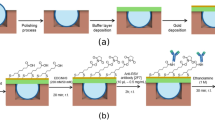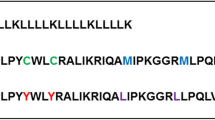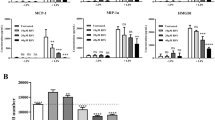Abstract
Recent reports suggest an important role for pulmonary surfactant in maintaining the patency of narrow conducting airways. The hypothesis that surfactant dysfunction is an important factor in respiratory syncytial virus(RSV) infection was tested in a mouse model. Mice, inoculated with either a low or a high dose of RSV, were subjected to bronchoalveolar lavage (BAL), and the fluids were analyzed for percentage of inflammatory cells and concentrations of proteins and phospholipids. After concentration of the surfactant by centrifugation, its function was analyzed with a capillary surfactometer. RSV infection resulted in a dose-dependent disruption of surfactant function (p < 0.0001). BAL fluid supernatants were added to calf lung surfactant extract (CLSE) to examine whether surfactant inhibiting agents were present. Indeed, BAL fluid supernatants of RSV-infected mice disrupted the normal function of calf lung surfactant extract in a dose dependent way (p < 0.0001), indicating the presence of inhibitors. Protein concentrations were increased in BAL fluids of RSV-infected mice versus control mice (p < 0.0001), and were inversely related to surfactant function (r = -0.44,p = 0.0004), suggesting an inhibitory effect of proteins. Protein concentration also correlated with the percentage of inflammatory cells(r = 0.51, p = 0.004). Phospholipid concentrations were not affected by the RSV infection. The results of these studies strongly suggest that a disruption of pulmonary surfactant function, most likely due to inhibition from inflammatory proteins, is important for the pathophysiology of RSV infection.
Similar content being viewed by others
Log in or create a free account to read this content
Gain free access to this article, as well as selected content from this journal and more on nature.com
or
Abbreviations
- BAL:
-
bronchoalveolar lavage
- CLSE:
-
calf lung surfactant extract
- pfu:
-
plaque-forming unit
- RSV:
-
respiratory syncytial virus
References
Hamm H, Kroegel C, Hohlfeld J 1996 Surfactant-a review of its functions and relevance in adult respiratory disorders. Respir Med 90: 251–270.
Postle AD 1995 Lung surfactants and asthma. Clin Exp Allergy 25: 1030–1033.
Günther A, Siebert C, Schmidt R, Ziegler S, Grimminger F, Yabut M, Temmesfeld B, Walmrath D, Morr H, Seeger W 1996 Surfactant alterations in severe pneumonia, acute respiratory distress syndrome, and cardiogenic lung edema. Am J Respir Crit Care Med 153: 176–184.
LeVine AM, Lotze A, Stanley S, Stroud C, O'Donnel R, Whitsett J, Pollack MM 1996 Surfactant content in children with inflammatory lung disease. Crit Care Med 24: 1062–1067.
Enhorning G, Duffy LC, Welliver RC 1995 Pulmonary surfactant maintains patency of conducting airways in the rat. Am J Respir Crit Care Med 151: 554–556.
Enhorning G, Yarussi A, Rao P, Vargas I 1996 Increased airway resistance due to surfactant dysfunction can be alleviated with aerosol surfactant. Can J Physiol Pharmacol 74: 687–691.
Ikegami M, Jobe A, Jacobs H, Lam R 1984 A protein from airways of premature lambs that inhibits surfactant function. J Appl Physiol 57: 1134–1142.
Holm BA, Notter RH, Finkelstein JN 1985 Surface property changes from interactions of albumin with natural lung surfactant and extracted lung lipids. Chem Phys Lipids 38: 287–298.
Seeger W, Stöhr G, Wolf HRD, Neuhof H 1985 Alteration of surfactant function due to protein leakage: special interactions with fibrin monomer. J Appl Physiol 58: 326–338.
Fuchimukai T, Fujiwara T, Takahashi A, Enhorning G 1987 Artificial pulmonary surfactant inhibited by proteins. J Appl Physiol 62: 429–437.
Keough KMW, Parsons CS, Tweeddale MG 1989 Interactions between plasma proteins and pulmonary surfactant: pulsating bubble studies. Can J Physiol Pharmacol 67: 663–668.
Enhorning G, Holm BA 1993 Disruption of pulmonary surfactant's ability to maintain openness of a narrow tube. J Appl Physiol 74: 2922–2927.
Enhorning G 1996 Pulmonary surfactant function in alveoli and conducting airways. Can Respir J 3: 21–27.
Liu M, Wang L, Enhorning G 1995 Surfactant dysfunction develops when the immunized guinea-pig is challenged with ovalbumin aerosol. Clin Exp Allergy 25: 1053–1060.
Liu M, Li E, Wang L, Enhorning G 1991 Pulmonary surfactant will secure free airflow through a narrow tube. J Appl Physiol 71: 742–748.
Treuhaft MW, Beem MO 1982 Defective interfering particles of respiratory syncytial virus. Infect Immun 37: 439–444.
Lowry OH, Rosebrough NJ, Farr AL, Randall RJ 1951 Protein measurement with Folin phenol reagent. J Biol Chem 132: 265–276.
Bligh EG, Dyer WJ 1959 A rapid method of total lipid extraction and purification. Can J Biochem Physiol 37: 911–917.
Chen PS, Toribara TY, Huber W 1956 Microdetermination of phosphorus. Anal Chem 28: 1756–1768.
Findlay RD, Taeusch HW, Walther FJ 1996 Surfactant replacement therapy for meconium aspiration syndrome. Pediatrics 97: 48–52.
Davey AM, Becker JD, Davis JM 1993 Meconium aspiration syndrome: physiological and inflammatory changes in a newborn piglet model. Pediatr Pulmonol 16: 101–108.
Hall SB, Notter RH, Smith RJ, Hyde RW 1990 Altered function of pulmonary surfactant in fatty acid lung injury. J Appl Physiol 69: 1143–1149.
Moses D, Holm BA, Spitale P, Liu M, Enhorning G 1991 Inhibition of pulmonary surfactant function by meconium. Am J Obstet Gynecol 164: 477–481.
Sun B, Curstedt T, Robertson B 1993 Surfactant inhibition in experimental meconium aspiration. Acta Paediatr 82: 182–189.
Richman PS, Spragg RG, Robertson B, Merritt TA, Curstedt T 1989 The adult respiratory distress syndrome: first trials with surfactant replacement. Eur Respir J 2( suppl 3): 109s–111s.
Nosaka S, Sakai T, Yonekura M, Yoshikawa K 1990 Surfactant for adults with respiratory failure. Lancet 336: 947–948.
Spragg RG, Gilliard N, Richman P, Smith RM, Hite RD, Pappert D, Robertson B, Curstedt T, Strayer D 1994 Acute effects of a single dose of porcine surfactant on patients with the adult respiratory distress syndrome. Chest 105: 195–202.
Heikinheimo M, Hynynen M, Rautiainen P, Andersson S, Hallman M, Kukkonen S 1994 Successful treatment of ARDS with two doses of synthetic surfactant. Chest 105: 1263–1264.
van Daal G, Bos JAH, Eijking EP, Gommers D, Hannappel E, Lachmann B 1992 Surfactant replacement therapy improves pulmonary mechanics in end-stage influenza A pneumonia in mice. Am Rev Respir Dis 145: 859–863.
Acknowledgements
The authors thank Dr. L. C. Duffy for her advice on statistical analyses.
Author information
Authors and Affiliations
Additional information
Supported by The Kettering Family Foundation and Grant HL49971 from the National Heart, Lung and Blood Institute of the National Institutes of Health.
Rights and permissions
About this article
Cite this article
Van Schaik, S., Vargas, I., Welliver, R. et al. Surfactant Dysfunction Develops in BALB/c Mice Infected with Respiratory Syncytial Virus. Pediatr Res 42, 169–173 (1997). https://doi.org/10.1203/00006450-199708000-00007
Received:
Accepted:
Issue date:
DOI: https://doi.org/10.1203/00006450-199708000-00007
This article is cited by
-
Endogenous lung surfactant inspired pH responsive nanovesicle aerosols: Pulmonary compatible and site-specific drug delivery in lung metastases
Scientific Reports (2014)
-
Hyperresponsiveness to inhaled but not intravenous methacholine during acute respiratory syncytial virus infection in mice
Respiratory Research (2005)



